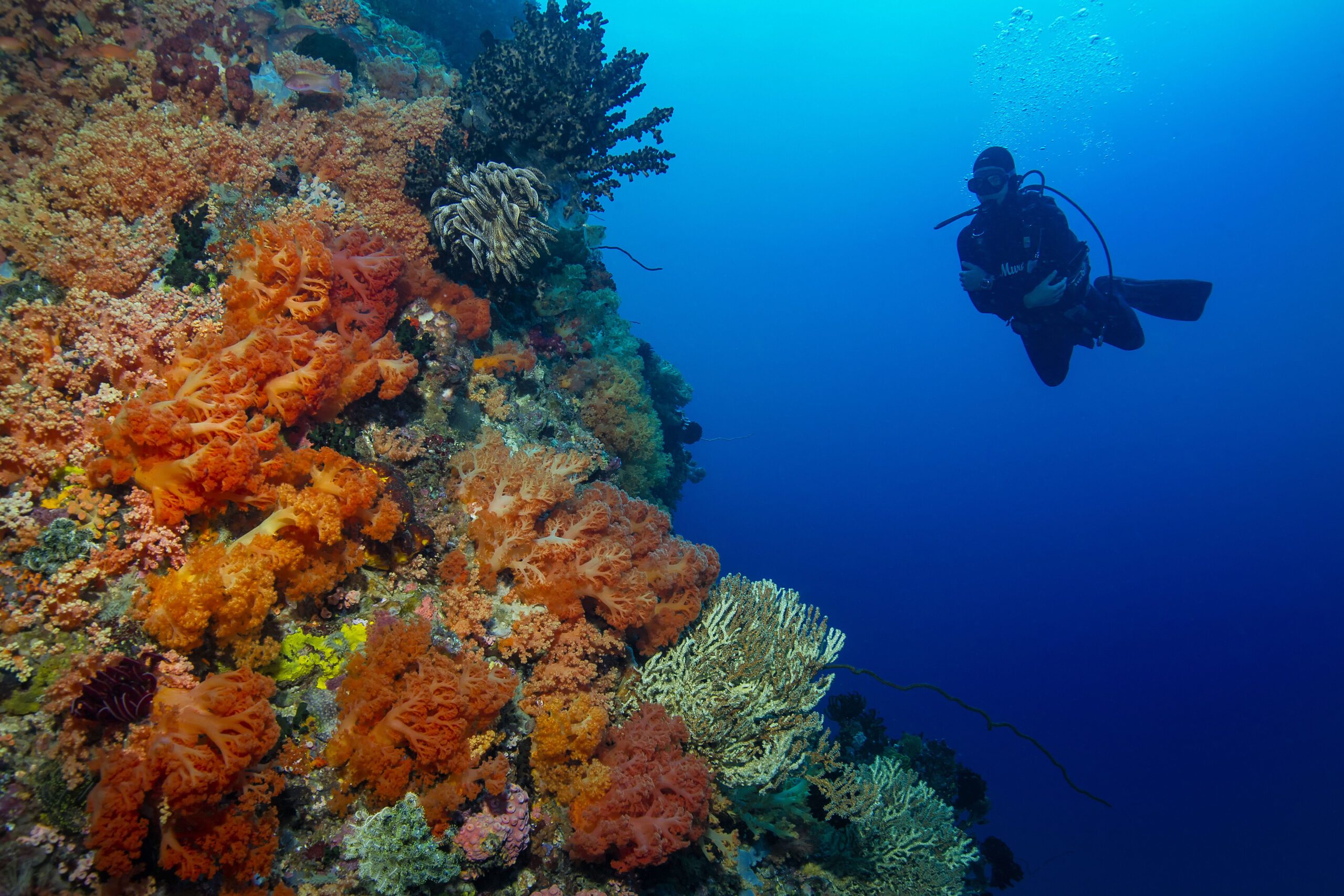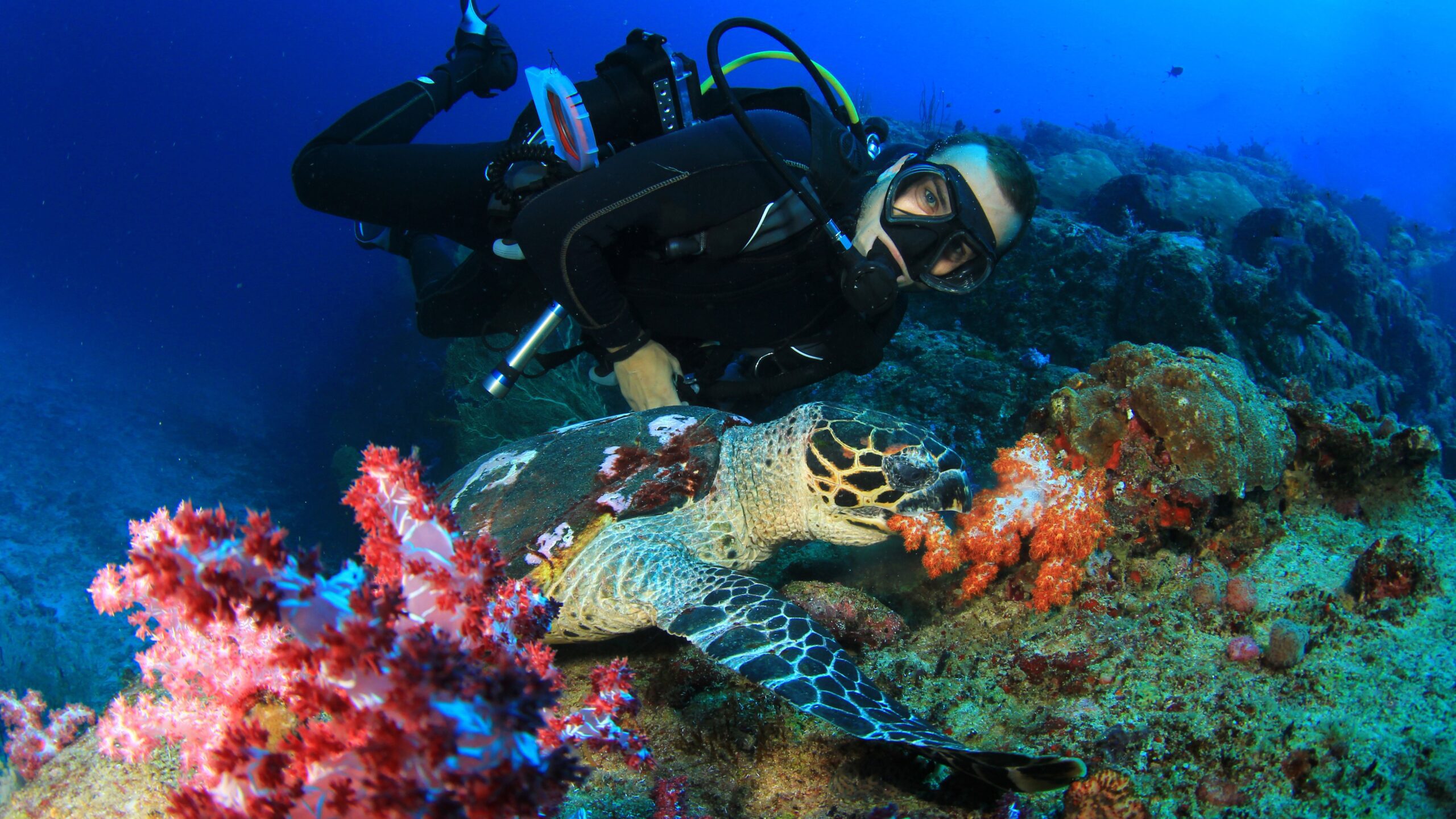
Improving your Air Consumption for Scuba Diving: How to Maximize Your Dive Times
Have you ever wondered how your Dive Guide finishes a dive with 100 bar still left in his tank? Do you opt for a larger tank so that you can stay down for the same time as your buddy? Air consumption rates are influenced by many factors and in this guide on improving your air consumption we take a look at 7 ways to make your air last longer and maximise your dive times.
1. Buoyancy is Key
No matter what level of diver you are, improving your buoyancy will lower your air consumption. Good buoyancy control includes selecting the correct amount of weight, mastering how to efficiently use your BCD and how to maintain good trim throughout the dive.
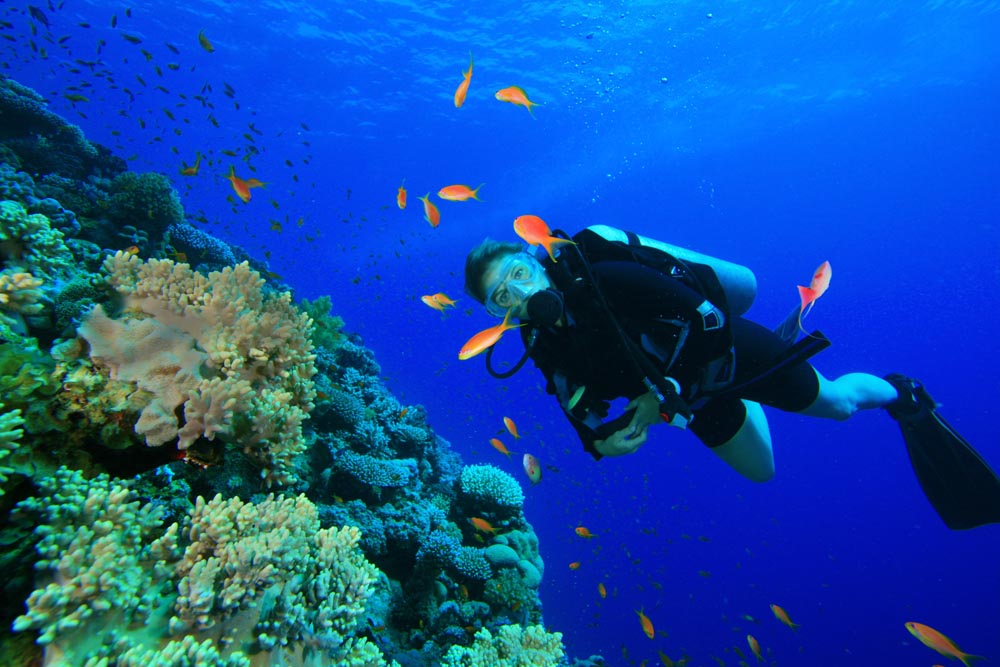
Buoyancy is key, improving your buoyancy will lower your air consumption
Correct weighting is the first step. If you are carrying too much or not enough weight you are severely limiting your potential for improving your air consumption. Just because you have “always dived with 8kg” doesn’t mean that it is correct. Be prepared to change your weight up or down accordingly.
One key sign that a diver is over weighted is that they are in a vertical (head up / feet down) position rather than horizontal. An over weighted diver will fin continuously in this position to counteract the additional weight that is pulling him down. All of that finning is exercise which means he is using more air. An underweighted diver will struggle to stay down for the latter part of the dive and try to correct the situation by swimming down which requires more effort and therefore more air. More detailed information about buoyancy can be found in our “How to improve your buoyancy and gauge your weights” blog.
2. Breathing, Exertion and Stress
We’ve already discussed above how excess finning due to over weighting means using more air but it’s not just overweighting that makes divers fin. Finning into current, finning fast with the current and generally moving around more will all increase air consumption. Photographers often use more air for this reason because they fin against current to stay in one spot to take their shot. Any form of exercise, no matter how minor, will cause some level of exertion which leads to more air being used – even twisting and turning to get the right angle with your camera. Try to stay as still as possible and just do the necessary minimum, it will lead to improving your air consumption drastically.
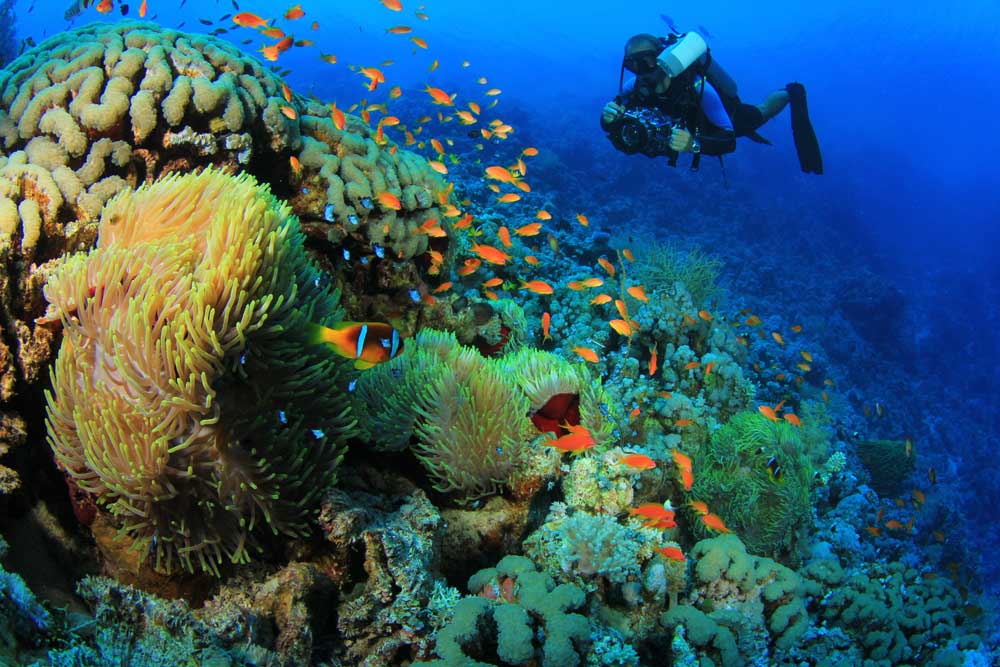
Photographers often use more air to get the best shot
Stress also causes the body to breath faster and harder which will effect your tank pressure – try to stay relaxed and focus on long and slow breathing cycles (each cycle being one breath in and one breath out). If a diver who takes 6 breathing cycles in one minute can dive on a regular sized tank for 40 minutes, a diver who only takes 4 breathing cycles in a minute (all things being equal) will be able to dive for one hour! Ask your buddy to count how many times you breath out (make bubbles) in 30 seconds and multiply it by 2 to find out your own breathing rate. Ask your buddy not to make it obvious when they are monitoring you – if you know your breathes are being counted you will think about your breathing and the result won’t be accurate.
3. Proper BCD Control
The most efficient use of air when it comes to operating your BCD is to make small and regular adjustments throughout the course of the dive. If you control your initial descent by slowly adding very shorts bursts of air to the BCD you will use much less air than a diver who forgets to add air until it is too late and has gone deeper than planned or is descending faster than he can equalise.
In the event of an uncontrolled descent the diver will usually start finning upwards (using more air through exertion) and at same time push and hold the inflator button adding much more air to the BCD than is necessary. The outcome of this will be positive buoyancy and to prevent an uncontrolled ascent the diver will dump all of the air out of the BCD resulting in negative buoyancy and the cycle begins again. The combination of adding too much air which then gets dumped later, excessive finning and possible panic result in a large amount of air being wasted.
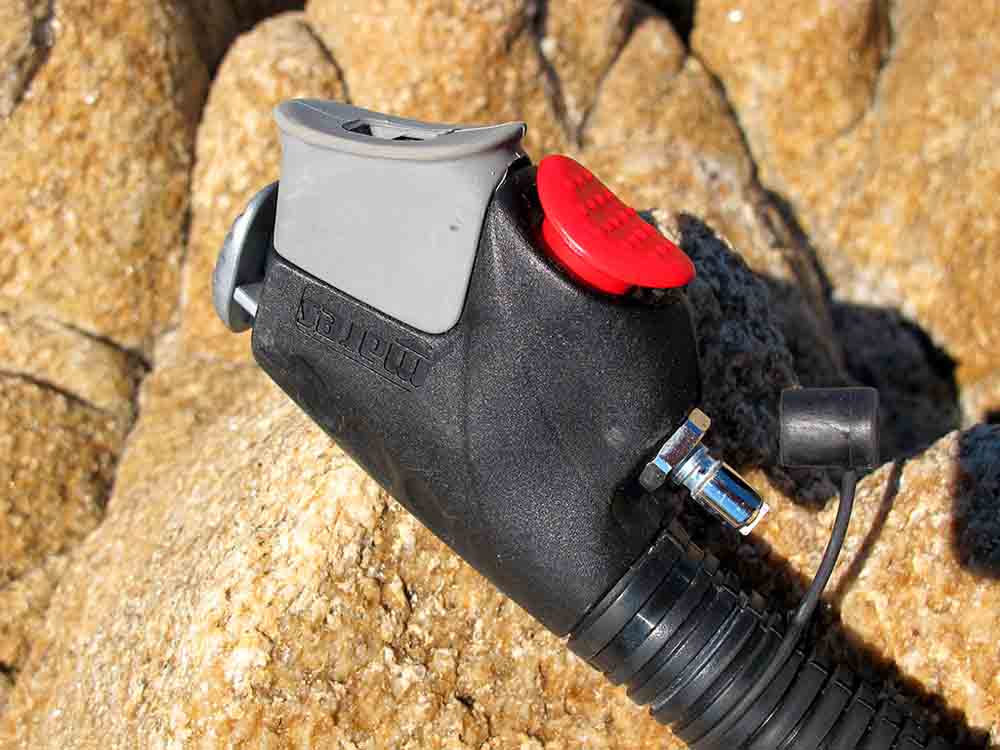
Add and release air from your bcd in small amounts
It’s not just when making your initial ascent that you need to be mindful of your BCD, throughout the dive try to remain at the same depth as your Dive Guide and pay attention to how close you are to the reef. If you find that you are rising up and keep having to swim down against your BCD you need to let a small amount of air out to maintain neutral buoyancy. The easiest way to gauge your buoyancy is to stop periodically during the dive, face the reef, cross your arms and legs and see if you sink or rise – you’ll get results instantly but remember that you will rise and fall gently as you breath in and out too.
When you ascend to make your safety stop, do so slowly whilst holding your inflator hose above you head. If you feel your BCD pulling you up release a small amount of air until you regain control by finning. Don’t dump all of the air out because you will only need to add some back in which is another waste.
4. Streamlining & Trim
Water is dense and the more streamlined we are the less resistance there will be meaning we become more efficient and therefore breath less. Secure all dangling equipment to prevent drag. Distribute your weights in the way that best allows you to swim without being tilted either head up or feet up. This will be a case of trial and error and will also depend on your BCD type. Many integrated BCD’s have “trim pouches” on either side of the tank as well as standard weight pockets and you may want to even consider using a weight belt if having weight towards the front of your hips helps you to stay horizontal. Remember that being horizontal means less effort which means less air!
5. Physical Fitness
Try to stay in shape for diving and maintain a good level of personal fitness, this is a big influence on improving your air consumption. An unfit person will breathe more heavily during gentle exercise than someone with a higher fitness level. Feeling over exerted on a dive also adds to stress which we already know will increase your breathing rate.
Swimming as an exercise has the added benefit that it not only increases your fitness level but it also maintains and develops your comfort level in the water which will reduce the chances of stress during a dive.
6. Maintain Your Equipment
Those small bubbles that are leaking out from your inflator hose may not look like much but any leaks result in air loss. Maintain your diving equipment to give yourself the best dive times and start improving your air consumption. Equipment should be serviced at least annually regardless – safety first!
7. Positioning
Have a look at where your Dive Guide is in relation to the bottom, sloping reef or wall. You’ll notice that they are very close, not out in the water column. This is not just so that they can find the best critters for you, it’s also because there is less current in these areas. If you move out into the blue the currents will be stronger which will increase the amount you need to fin against it to stay behind your guide. That’s also why they are able to move along the reef very slowly.
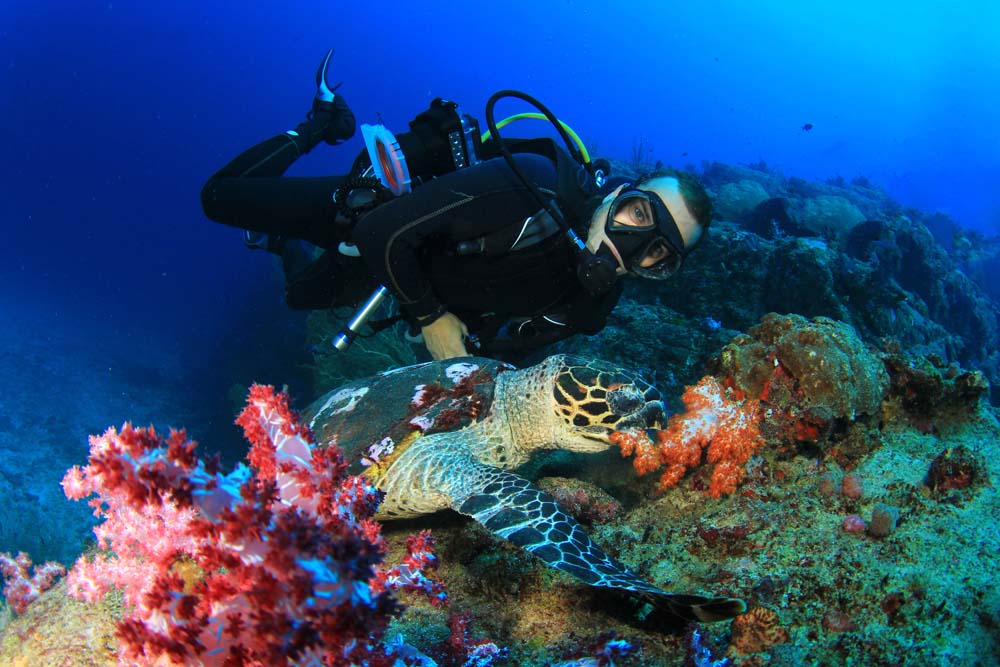
Stay close to the reef where there is less current
To find out more tips and scuba diving techniques for improving your air consumption while diving chat with our Dive Guides when you are here at Murex Dive Resorts – they are a great source of information and advice!
Ready to Dive In? Contact Us and Unleash Your Underwater Adventure!
To book your next North Sulawesi Diving adventure contact us on reservations@murexresorts.com
Why not explore three distinct diving destinations in one trip and join us for our Passport to Paradise program and dive in Bunaken, Bangka and Lembeh? You’ll dive some of the best dive sites in Indonesia, experience world-class marine life and reefs as well as the warm and friendly people of North Sulawesi.




